MARIANI’S
Virtual
Gourmet
May 29, 2016
NEWSLETTER
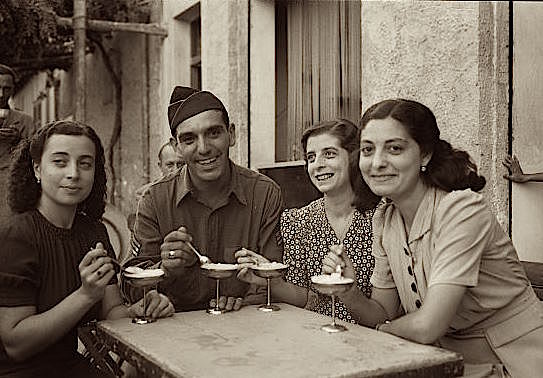
American
G.I. in Sicily, 1943
COMMEMORATE
MEMORIAL DAY
IN THIS ISSUE
DINING OUT IN ANNAPOLIS, Part Two
By John Mariani
NO END IN SIGHT FOR THE
SECURITY LINE DISASTER
NEW YORK CORNER
ATRIO
By John Mariani
NOTES FROM THE WINE CELLAR
LA CREMA
By John Mariani
❖❖❖
DINING OUT IN ANNAPOLIS,
Part Two
By John Mariani
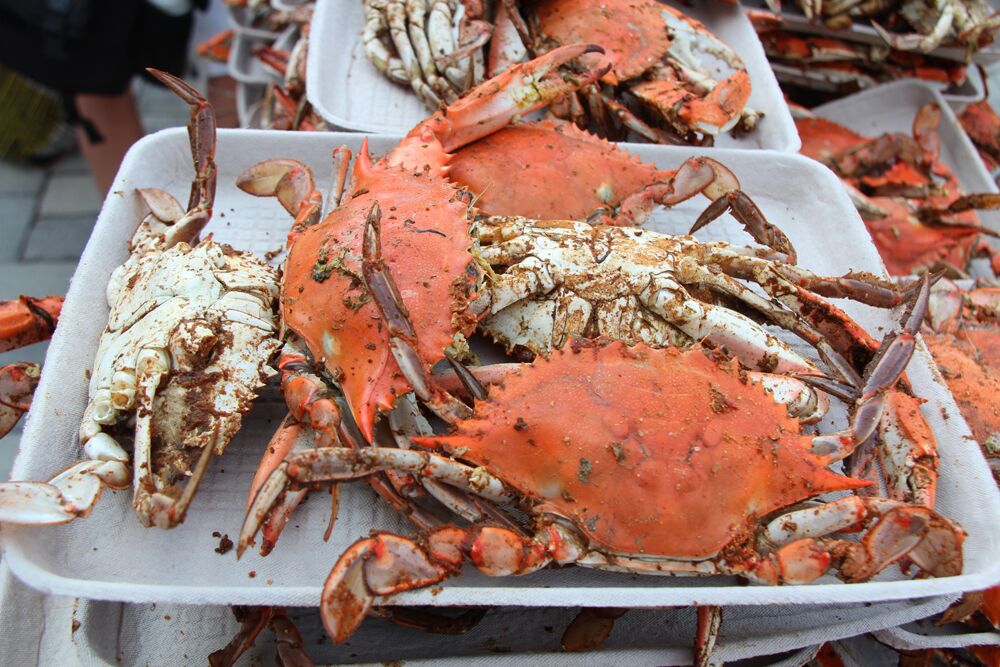
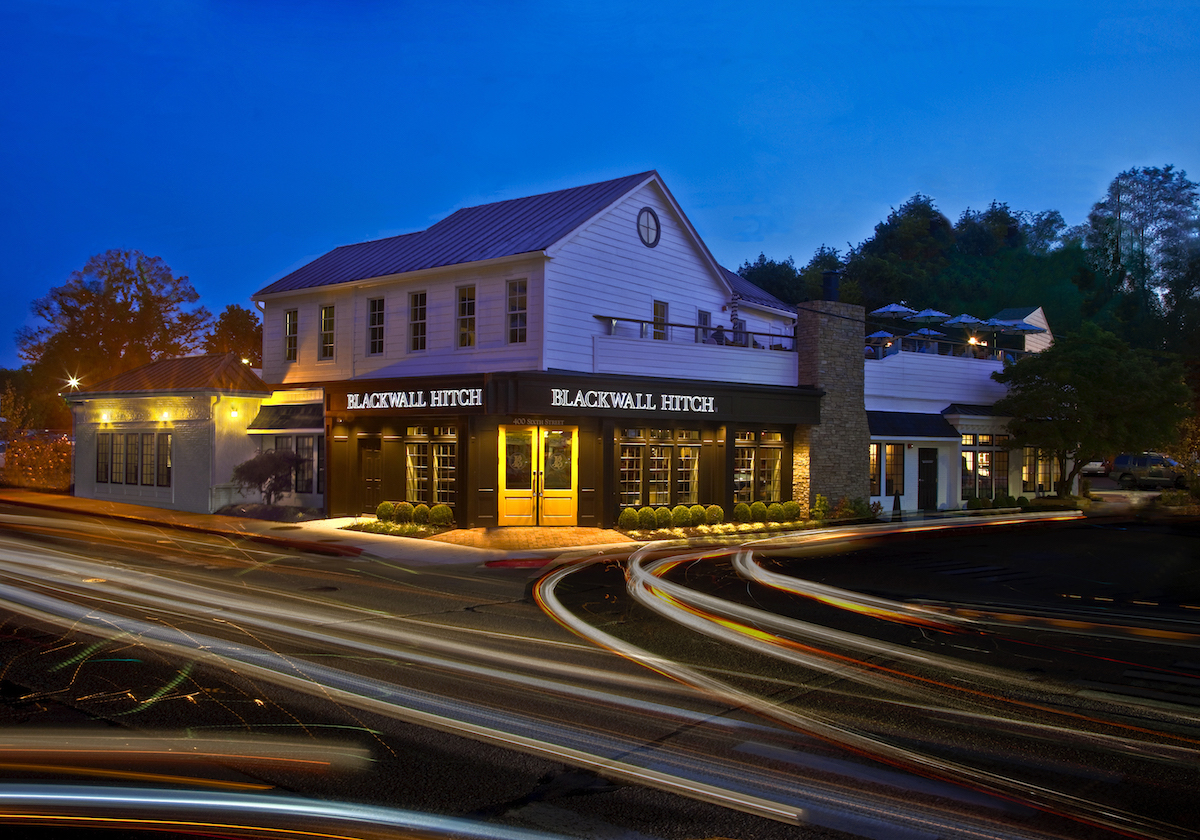 The Blackwall Hitch
The Blackwall Hitch
400 Sixth Street
410-263-3452
theblackwallhitch.com/annapolis
I tend to shy away from chain
restaurants, however few the links may be, but in
the case of The Blackwall Hitch, I would be remiss
if I didn’t say it really is one of the best, most
ambitious restaurants in Annapolis, with branches
in Rehoboth Beach and Alexandria. The odd
name comes from a special mariner’s knot used to
hitch ships quickly and securely upon arriving
from London’s Blackwall Port at docks in Maryland
and Virginia.
Thus, there are maritime echoes in the
décor of the Annapolis unit (the first, opened two
years ago, owned by local James King), along with
Colonial-style high-backed chairs, tufted black
booths, and hanging Edison lights, with a large,
well-lighted bar to the rear of the very
comfortable main dining room. There’s
also rooftop dining and live music Wednesday
through 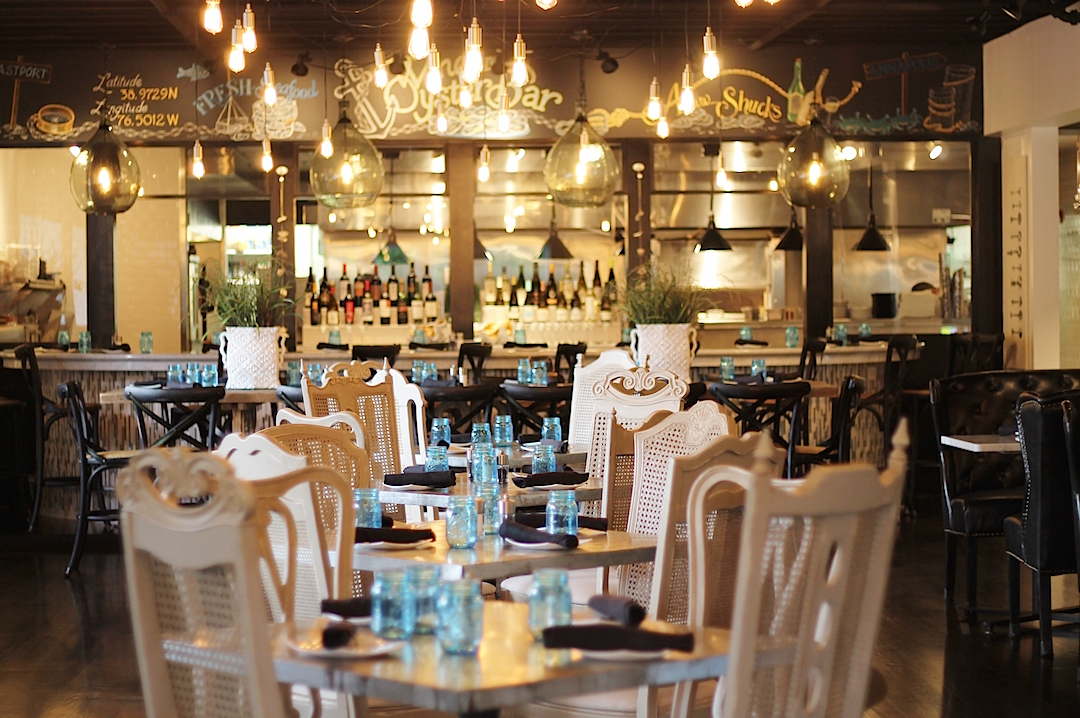 Sunday,
and a Sunday jazz brunch.
Sunday,
and a Sunday jazz brunch.
Executive Chef Zachary Pope has
a long résumé with the awards to prove his rep as
a chef adept in a wide range of cuisines, with
stints in Washington restaurants like
Vidalia, Vintage Wine Bistro and Red Sage.
The menu, therefore, offers fine Chesapeake
fare like lump meat crab cakes with sweet-tangy
roasted corn salsa, cherry pepper rémoulade and
rosemary-scented French fries ($35) and wonderful
shrimp and cheddar-laced grits with andouille
sausage, tomatoes and a white wine sauce ($27),
along with seared ahi tuna dusted with sesame
seeds, served with seaweed salad, hot wasabi,
Sriracha and avocado cream as an appetizer ($16)
and six really exceptional fire-roasted flatbreads
($13-$16) that can be shared at the table.
Then there are a slew of salads—the one
with steak and blue cheese is delicious—burgers
and sandwiches, and main courses like succulent
pork osso buco ($28). Right now the soft-shell
crab season is in full swing.
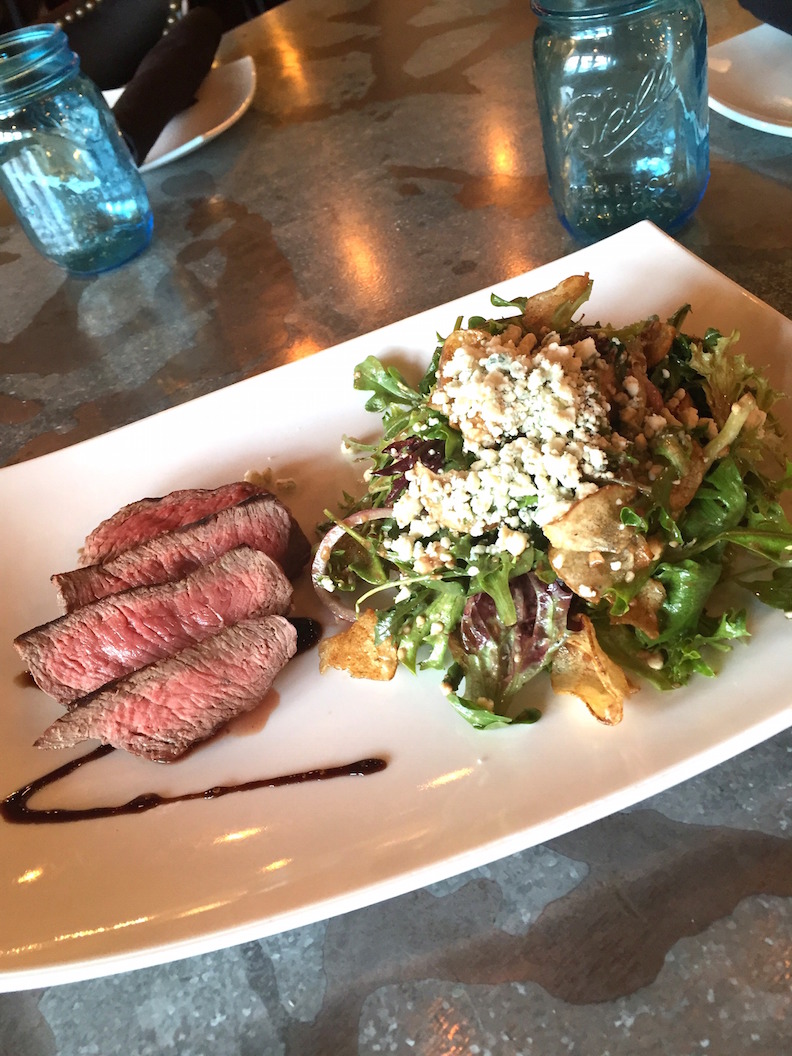 Like
many restaurants around town, they serve the
dense, mile-high Smith Island chocolate cake ($9),
along with Key lime panna cotta with strawberry
sauce ($9), and a warm pineapple upside down
skillet cake with brown butter and caramel ($9),
along with housemade chocolate truffles ($2.50
each).
Like
many restaurants around town, they serve the
dense, mile-high Smith Island chocolate cake ($9),
along with Key lime panna cotta with strawberry
sauce ($9), and a warm pineapple upside down
skillet cake with brown butter and caramel ($9),
along with housemade chocolate truffles ($2.50
each).
The wine list is pretty
extensive and includes many bottles under $50,
though they should have more Maryland and Virginia
wines on the list. Wines by the glass are priced
way too high: a Francis Ford Coppola Director’s
Cut 2013 that sells for about $15 in the wine
store costs the same here for a single glass.
The Blackwall Hitch is, as I
said, ambitious, but I found the quality of
everything I tasted consistent and made from very
fine ingredients.
That, and a lively bar crowd and music, are
what keeps the place packed with people willing to
pay good money for very good food.
Open daily for breakfast, lunch and
dinner.
IRON ROOSTER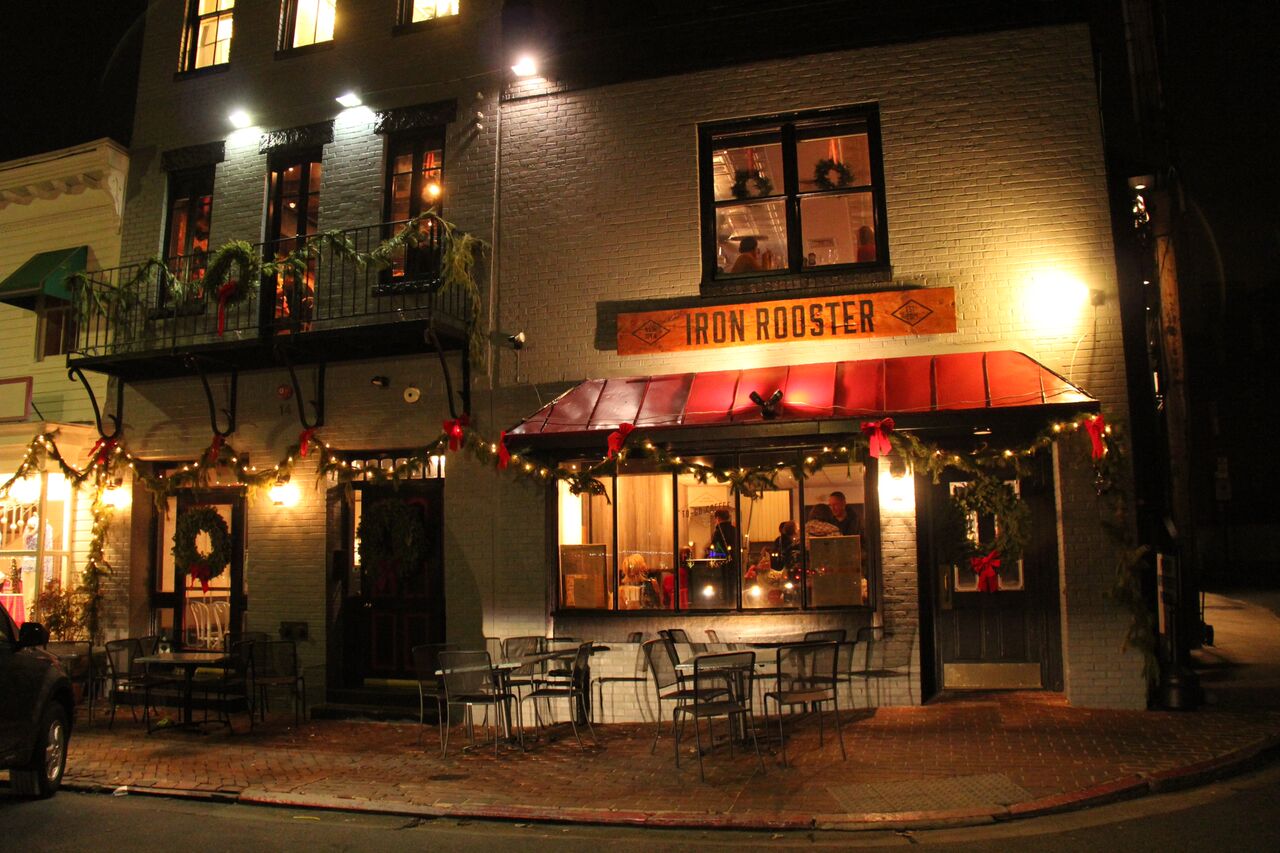
12 Market Space
410-990-1600
ironroosterallday.com
Iron Rooster proudly boast that it
serves “Breakfast All Day,” and many loyal patrons
take advantage of that. I would most certainly join
them any time over a big plate of fried chicken
breast and waffles with cream gravy and very good
stone-ground grits ($9.95), and the omelets make
for a hearty meal from 7 a.m. onward. The
eggs Benedict are sensationally good—there are
five variants—and I, of course, went for the
“Benny,” with that sweet Maryland blue crab meat,
a poached egg, tomatoes and micro greens atop an
English muffin (a steal at $17.95). The breakfast
taco ($13.95) includes scrambled eggs, fat pork
belly, green chili salsa, pico
de gallo, queso fresco and home fries
($13.95).
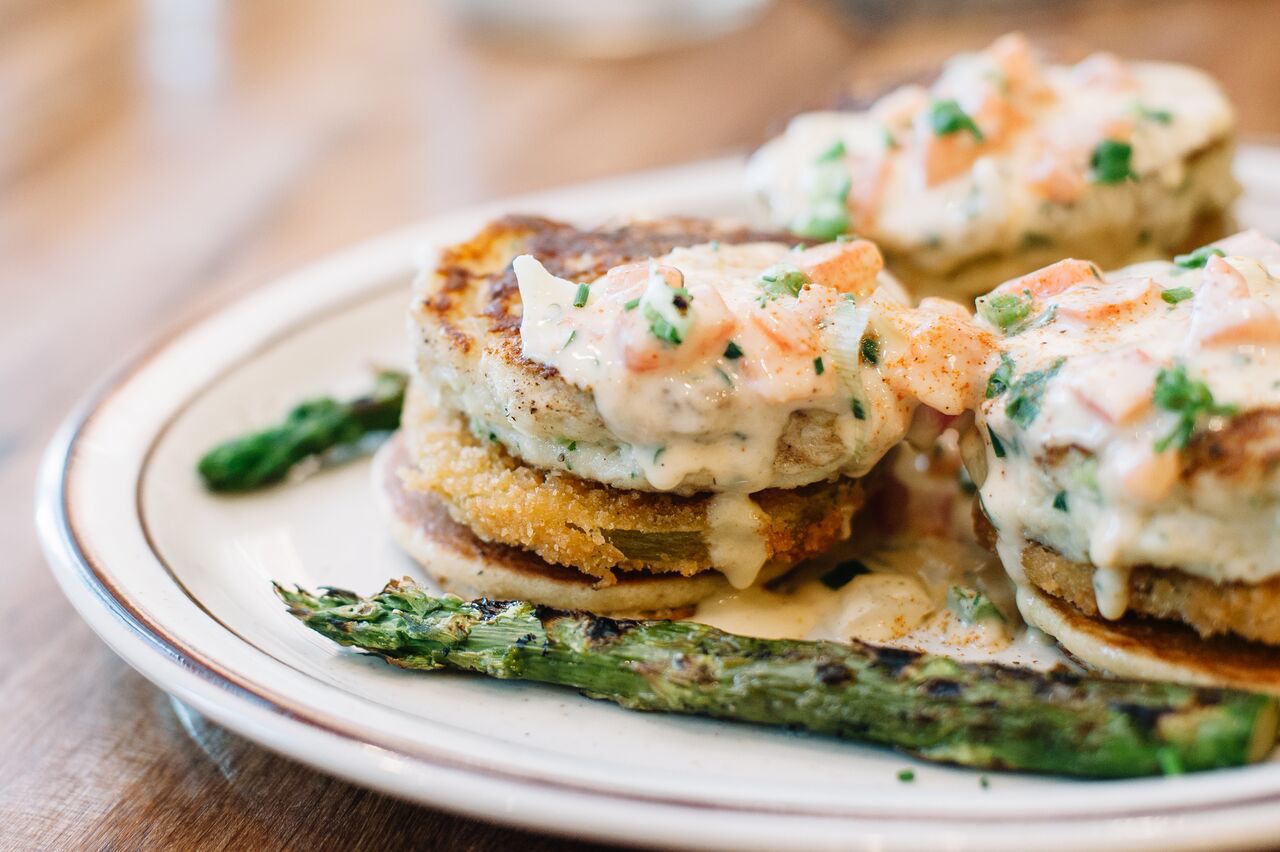 There’s
a great deal more, all of it made fresh to order,
including fine flaky biscuits, and the signature,
much-too-sweet Navy pop-tarts ($5.95). For
supper you can have the smoked brisket chili
($4.95-$7.95), chicken pot pie ($22.95)
There’s
a great deal more, all of it made fresh to order,
including fine flaky biscuits, and the signature,
much-too-sweet Navy pop-tarts ($5.95). For
supper you can have the smoked brisket chili
($4.95-$7.95), chicken pot pie ($22.95) 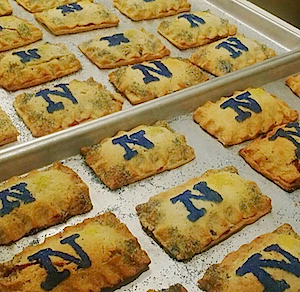 that will
feed two people, and a meatloaf of daunting
proportions, with black pepper pan gravy and
poached egg, fried leeks and broccoli ($21.95).
that will
feed two people, and a meatloaf of daunting
proportions, with black pepper pan gravy and
poached egg, fried leeks and broccoli ($21.95).
The colorful two-tiered eatery,
with a lot of farmhouse décor and Mason jars on
the wooden tables, is set right on the City Dock,
so it’s a swell place to take your time and watch
the boats come and go along with the people.
Open Mon.-Sat. 7 a.m.-10 p.m.; Sun.
7 a.m.-8 p.m.
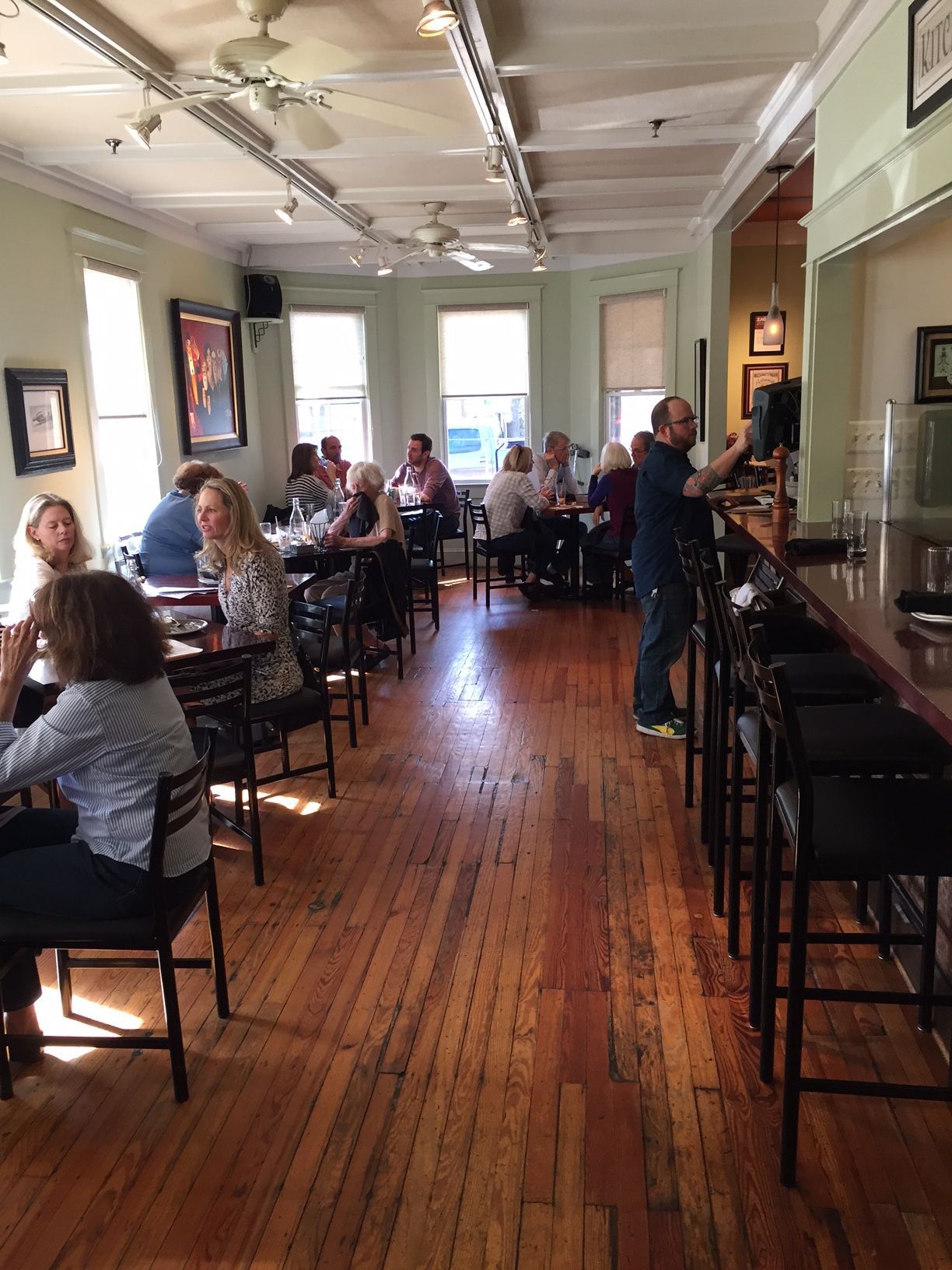 VIN 909
VIN 909
909 Bay Ridge Avenue
410-990-1846
vin909.com
Set in a pillared, clapboard Sears
Roebuck house in Annapolis’ Eastport
residential neighborhood, Vin 909 gives off the
feeling that you’re dropping in for a nice meal at
a friend’s home, in this case your new friends,
owner Alex Manfredonia and chef Justin Moore, who
opened this very popular restaurant five years
ago. In
cool weather there’s a nice fireplace you can warm
yourself at; in hot weather, a patio. Meals,
as at home, are meant to be shared.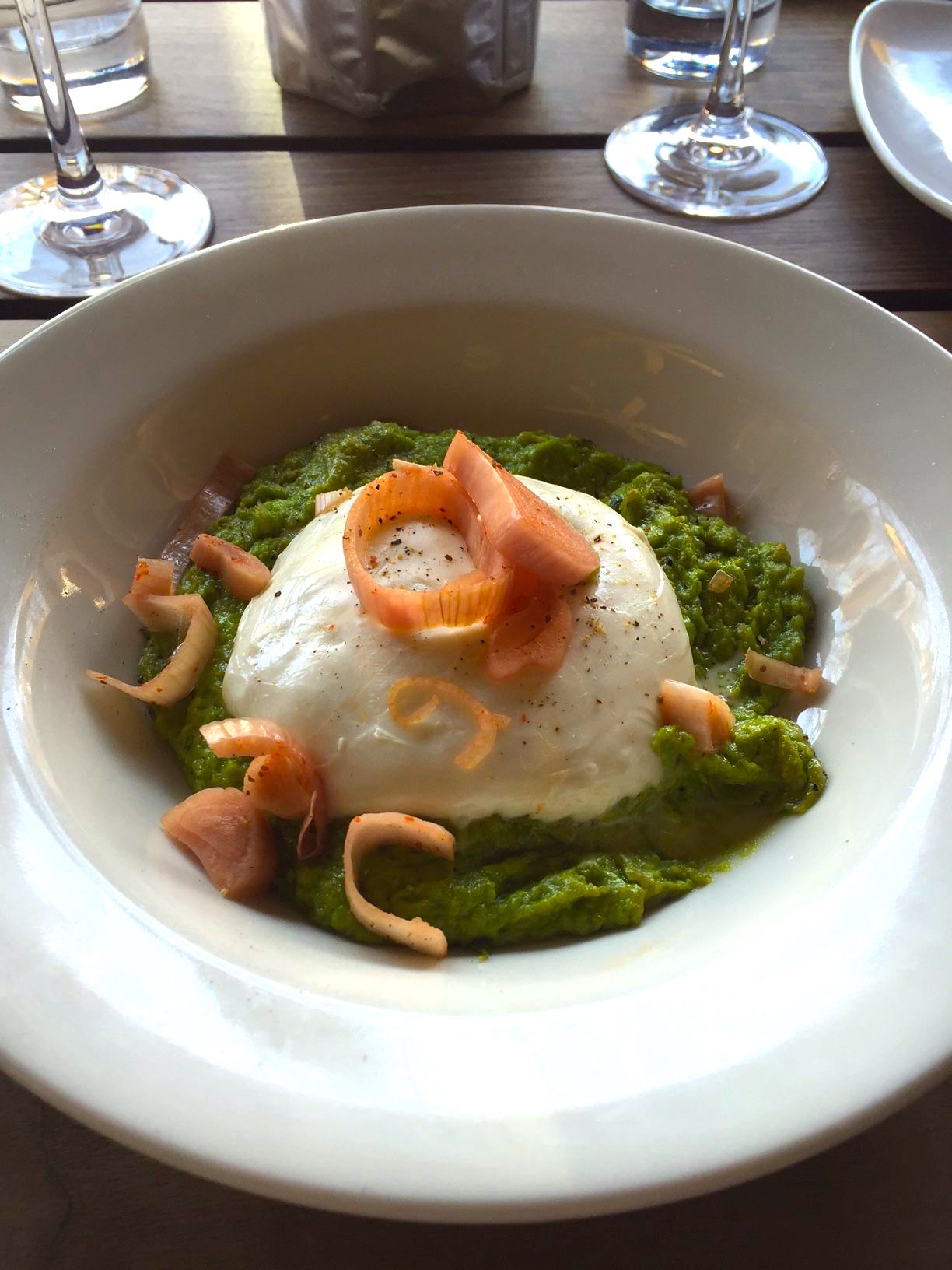
Vin 909 is a very green
restaurant—they even recycle their oyster
shells—earning the Annapolis
Environmental Stewardship Certification and a
Certificate from the Environmental Protection
Agency's Green Power Partnership Program. Ingredients
are as organic and sustainable as possible, and
they list their providers on the menu. The seafood
just arrived that morning from the local boats.
It’s just a really nice, nice place, and
big-hearted Alex couldn’t be more amiable or happy
to see you.
We dined out on the patio on a
brilliant sea-blue afternoon, and we might have
lingered for hours among people who were doing
just that, sipping the last of a bottle of rosé
wine, splitting a dessert, wondering when they can
get back again.
Of course, wine plays a big part of the
philosophy and the appeal 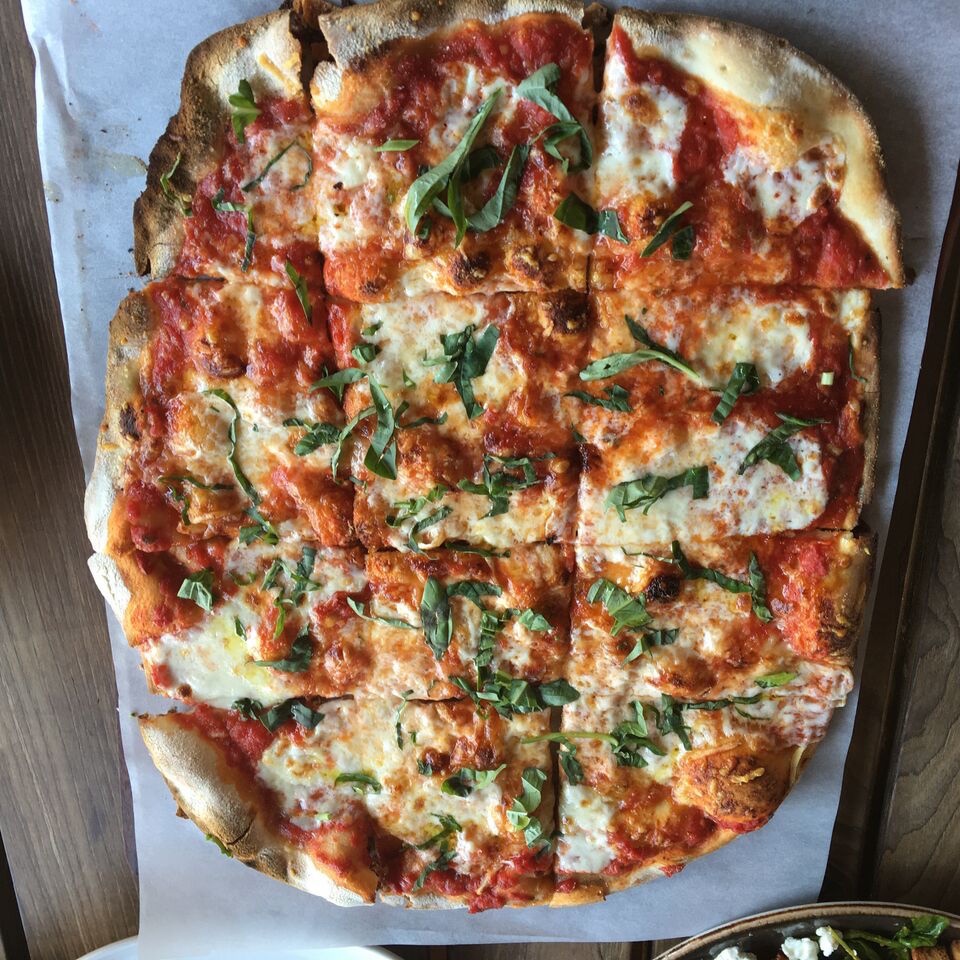 here, with
90 well-priced labels on the list, and all beers
are from either craft or micro breweries.
here, with
90 well-priced labels on the list, and all beers
are from either craft or micro breweries.
Do not
fail to order the lovely, warm, fresh-pulled
mozzarella ($14), served in an almond-ricotta
pesto with fried basil and “pearl” dots of
balsamic vinegar (above right). The
pizzas (left),
eight of them, are more like flatbreads and are
addictive; we ordered two for three at our table:
the simple Margherita ($12) and the “Fun Guy”
($16) with wild mushrooms, ramps, Taleggio cheese,
arugula and a sprinkling of freshly picked thyme.
Although it’s
all too easy to order way too much, the food is
light, intensely flavorful, and seems to lead
naturally to having a dessert like chocolate pot
de crème ($7) or butterscotch pudding ($7). The
cooking seems simple, so it has to be perfect to
impress guests the way it does.
Open for lunch Wed.-Fri., for
dinner Tues.-Sun.
❖❖❖
NO END IN SIGHT FOR THE
SECURITY LINE DISASTER
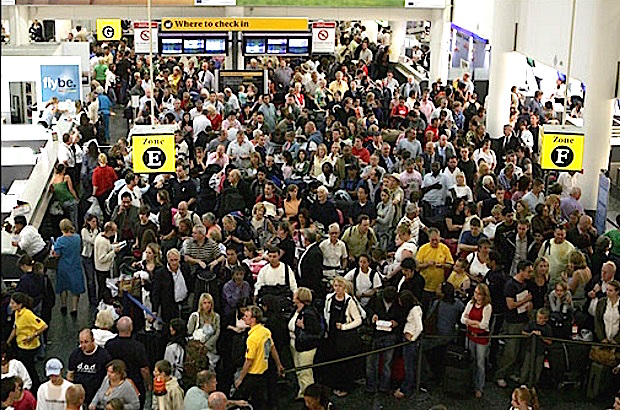
The
ominous news about the increasingly wait times to
get through security has bewildered travelers as to
how best to make the best out of a  horrible situation—one that should not
have happened.
The Virtual
Gourmet asked Tom Spagnola, SVP of Supplier Relations
(left)
for CheapOair
to answer a few questions.
horrible situation—one that should not
have happened.
The Virtual
Gourmet asked Tom Spagnola, SVP of Supplier Relations
(left)
for CheapOair
to answer a few questions.
VG: How will the
anticipated 220 million passengers who are
expected to fly during the peak travel months of
July and August impact TSA lines at the airports?
TS: There will be a heavy
strain on TSA this summer as the DHS (Department
of Homeland Security) is stating that long lines
will be inevitable. This is going to make
travelers prepare in advance with the long wait
lines and also have to have a lot more patience.
TSA is looking to hire 768 more TSA agents by
mid-June but will not nearly be enough to handle
the record-breaking travelers. Wait times could be
up to three hours in major airports.
VG: Why is arriving
two-hours prior to departure the new norm for all
domestic flights?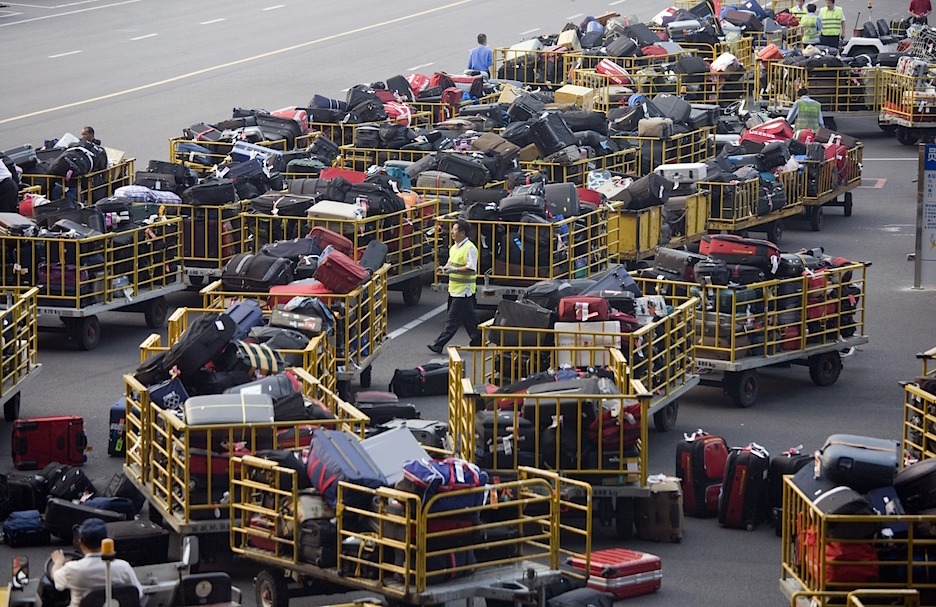
TS: With the 220 million travelers
this summer, the percentage of TSA lines as compared
to the number of travelers is clearly a small
percentage of what is needed to accommodate the
travelers. Because of the cost of checked luggage is
expensive, more people are trying to bring on as
much carry-on as possible, which makes for the
perfect storm of slower lines through TSA as there
are more items to check. There are a lot of “new”
travelers this summer because of lower prices so
more families are traveling together with children,
which typically takes longer for the parents to get
the kid’s items through TSA. There are
also adults who haven’t traveled in years so,
believe it or not, there are still several people
that do not understand the restrictions of what is
allowed and not allowed to make it through security.
VG: How far in
advance should travelers who are flying
international plan to arrive at the airport?
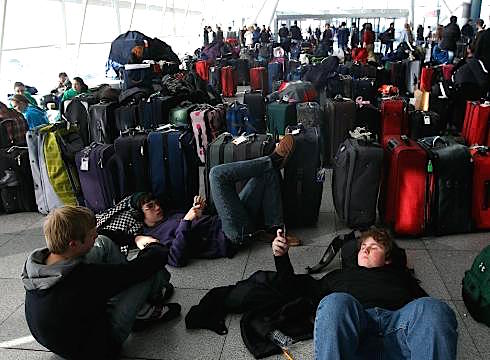 TS: Three
hours minimum. Security is much more at a
heightened level with the recent terrorists
attacks and threats. Travelers are being screened
with much more scrutiny, so this is causing huge
delays in getting through security. The capacity
growth for international travel globally is adding
to the success of the travel industry, but this is
definitely causing delays. Most international
travelers are going on longer trips, so there is
more luggage being checked at the counter, which
can easily add five minutes to every person
checking-in.
TS: Three
hours minimum. Security is much more at a
heightened level with the recent terrorists
attacks and threats. Travelers are being screened
with much more scrutiny, so this is causing huge
delays in getting through security. The capacity
growth for international travel globally is adding
to the success of the travel industry, but this is
definitely causing delays. Most international
travelers are going on longer trips, so there is
more luggage being checked at the counter, which
can easily add five minutes to every person
checking-in.
VG: How can
travelers best plan for airport security?
TS: The best information is
on the TSA website www.tsa.gov . All of
the terms and restrictions are listed on the site;
however, many travelers do not check the website,
which will add to travel time. Even the ticket
agents at the check-in counters are now advising the
travelers of what will not be allowed through TSA,
so you will see a lot of travelers scrambling at the
ticket counter trying to pull items from their
carry-on bags and putting them into their checked
luggage. Joining
TSA Pre-Check allows you to have a priority line
that allows you to not have as many restrictions of
items needed to get through the TSA line! Cost is
approx. $100 for five years so it will be the best
investment if you are a frequent traveler this
summer and for future travel!
VG: What should
travelers do if they miss their flights, due to
delays and overcrowded security checkpoints?
TS: It
is always recommended to know your airline’s
schedule for flights that depart after your
scheduled flight. The biggest risk is flying on
the red-eye flights or being the last flight out
that day/night, as you will have to spend many
hours and even overnight in some cases waiting
until the next morning to try and get on a flight.
With the technology of mobile apps, travelers can
look at several different websites and apps that
will provide more flight options to the traveler’s
destination.
That said, it could be a very stressful
experience if you miss your scheduled flight
because with most flights being sold out this
summer, it could hours/days to get on a flight.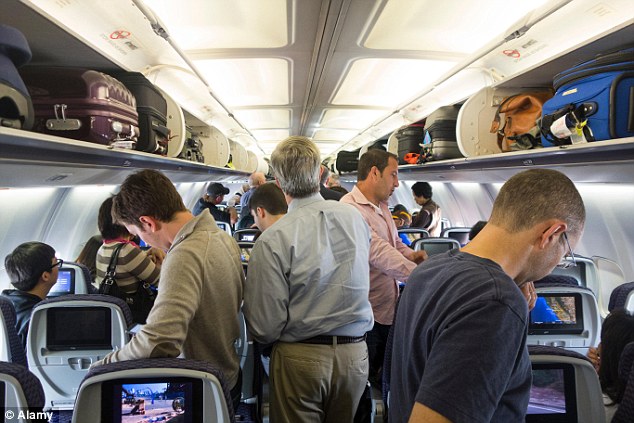
TS: This is an urgent issue for
DHS now trying to hire as many TSA agents as
possible across the USA. Only 768 agents are trying
to be added by mid-June but there will actually need
thousands of TSA agents to help keep up with the
demand of the number of passengers. TSA is working
on an overtime program as soon as possible. It
simply comes down to not enough agents to manage
more lanes to help speed up the process.
TS: There is a very detailed
application that needs to be completed by a person
registering to be approved for Pre-Check. The
questions are quite extensive that relates to family
history as well as previously traveled countries and
explanations of other past history. The
registrant will then have a personal appointment
with a DHS officer to go through the application.
The process can take up to thirty minutes and
fingerprints are then required during the interview
as well. There is a waiting period of 15-30 days to
get confirmation of approval or denial. There is a
thorough background check made by DHS before making
their decision.
I have not heard about Pre-Check being a
random selection.
TS: Yes. GOES covers TSA
Pre-Check
TS: Most of the airlines are
offering assistance to the passengers prior to
getting into the TSA lines by reminding passengers
of their luggage/carry-on restrictions before
getting in line. There is a tremendous amount of
pressure on the Operations Team at the airports for
each airline to do their best to make sure all of
their passengers can make their flights. Most
airlines are sending text or email confirmations
offering travelers to check-in online prior to
departure as well as reminding their customers about
the time allowed for check-in prior to a flight and
the necessary time needed to make sure their
travelers minimize missing their flights.
❖❖❖
By John Mariani
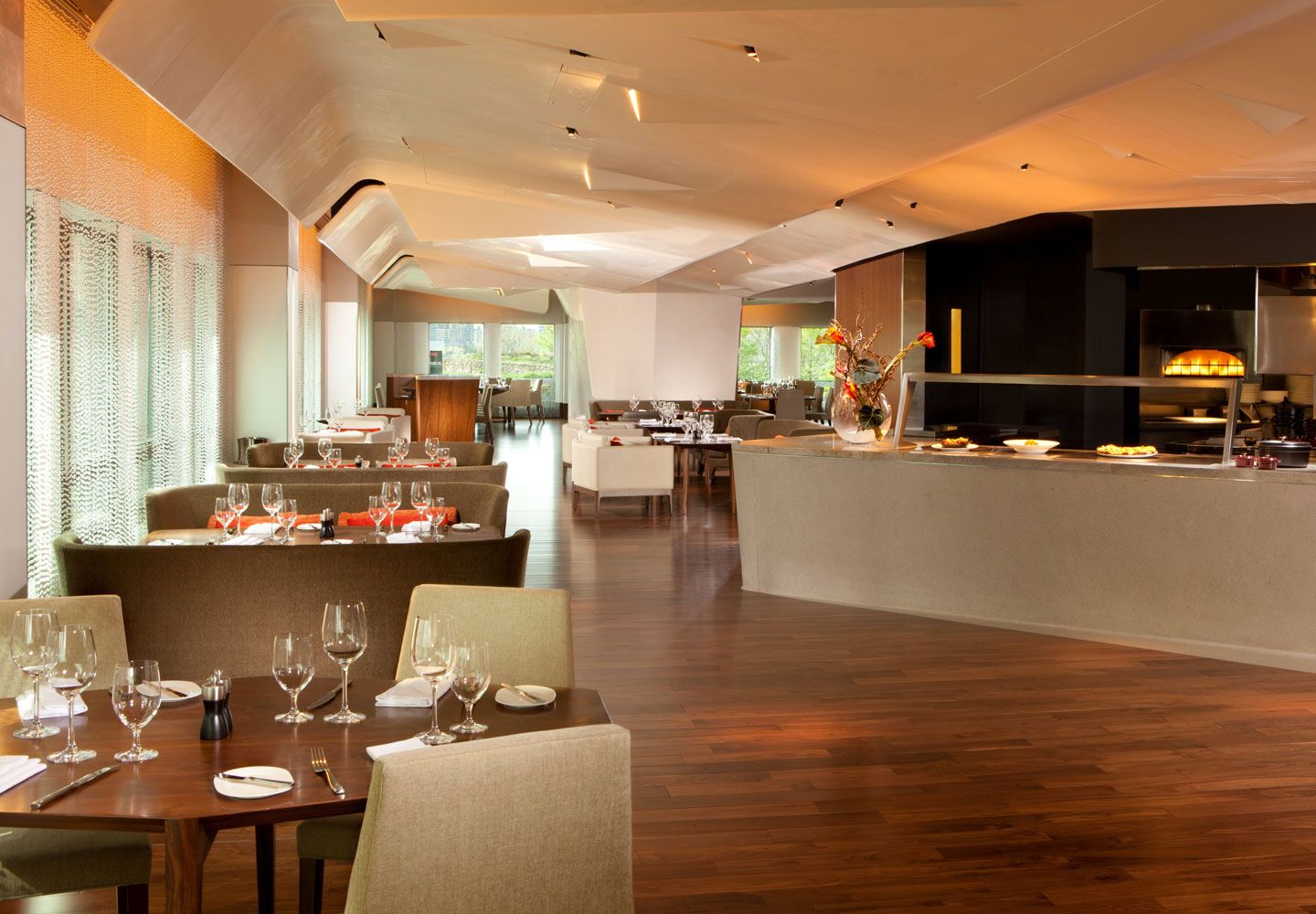 ATRIO Wine Bar
& Restaurant
ATRIO Wine Bar
& RestaurantConrad Hotel
102 North End Avenue (near Murray Street)
212-945-0100
conradnewyork.com
Despite
the fact that so many of the world’s finest
restaurants, both in the U.S. and abroad, are in
hotels, some people still place an onus on
dining at one, in the supposition that such
restaurants are on premises merely as an amenity
for those staying there. Knowing
this, many hoteliers in the U.S. hire big name
chefs to open restaurants said to be “free
standing” or “attached” to the hotel, like
Jean-Georges at Trump International Hotel in
NYC.
Oddly enough, in Las Vegas
restaurants in hotel-casinos are the norm,
though the celeb chefs are rarely ever in them,
while exquisite dining rooms like La Pergola at
the Cavalieri Waldorf-Astoria and Imago at The
Hassler, both in Rome, are set on high floors
that present a magical panorama along with
superb cuisine and wine.
Which brings me to Atrio in
the Conrad Hotel, which sits adjacent to the
15-story second atrium that is itself a work 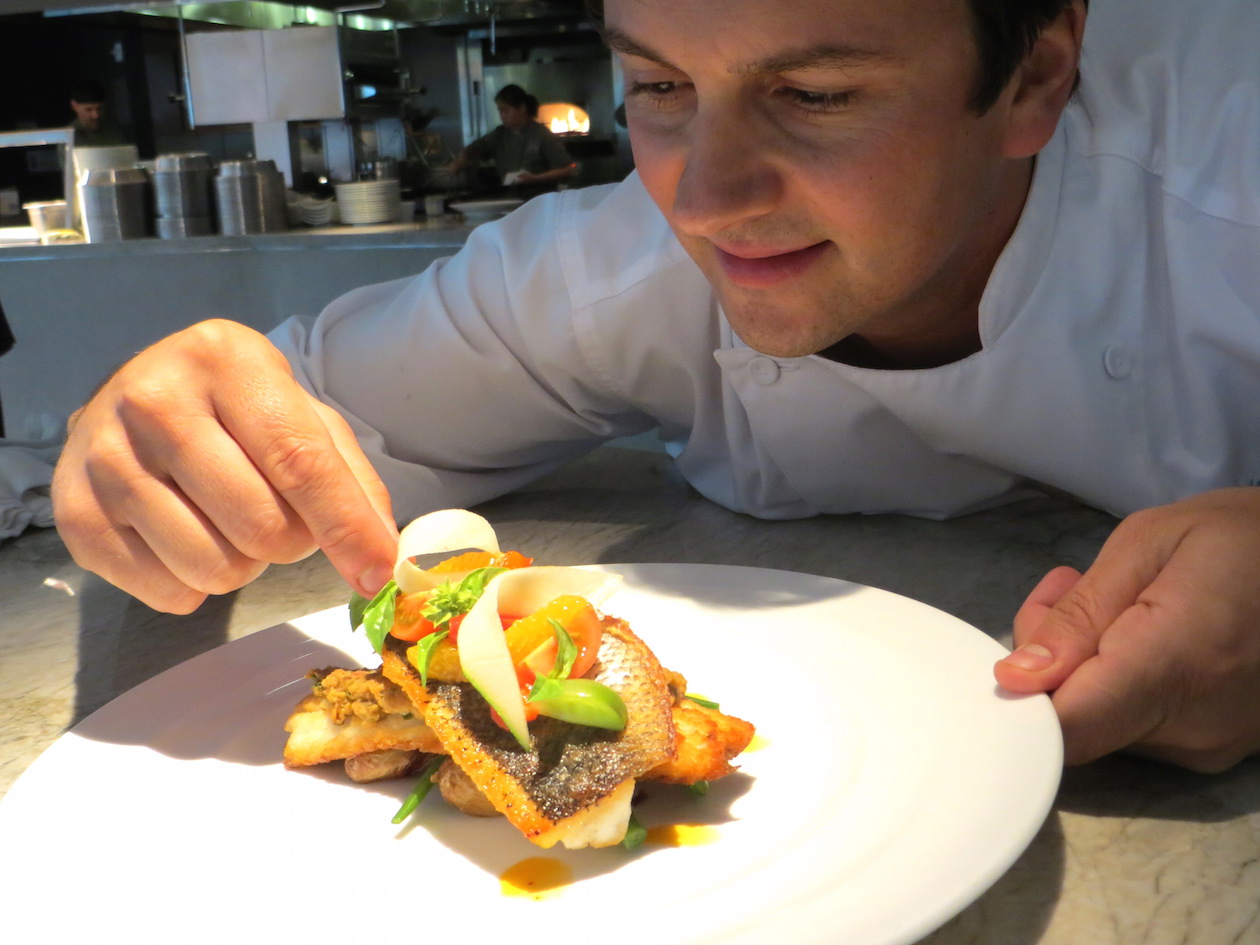 of
monumental art, with an oddly named monumental
work called "Loopy Doopy" by Sol LeWuitt, and
the restaurant itself is a sleek, handsome,
glass-walled room that serves as a very popular
wine bar up front and as a smart-casual dining
venue further on. There the sofas are deep and
wide, the wooden tables well set, and the
lighting as romantic as you might wish, but this
is also a fine spot for a business meal in the
Wall Street area, just blocks from the Freedom
Tower. Indeed,
the area is now home to several notable
restaurants, with Atrio one of the first in the
aftermath of 9/11 to turn the lights onto the
barren streets.
of
monumental art, with an oddly named monumental
work called "Loopy Doopy" by Sol LeWuitt, and
the restaurant itself is a sleek, handsome,
glass-walled room that serves as a very popular
wine bar up front and as a smart-casual dining
venue further on. There the sofas are deep and
wide, the wooden tables well set, and the
lighting as romantic as you might wish, but this
is also a fine spot for a business meal in the
Wall Street area, just blocks from the Freedom
Tower. Indeed,
the area is now home to several notable
restaurants, with Atrio one of the first in the
aftermath of 9/11 to turn the lights onto the
barren streets.
Chef Antonio
Cardoso (right),
34, was born in Lisbon, where his grandmother
inspired him to cook, and he has never forgotten
the smoky flavors of Portugal and Iberia, which
lend marvelous personality to his cuisine. This
was evident from the start of our meal upon the
presentation of truffled arancini
rice balls with a red pepper conserva
and the chorizo-flecked batata
bravas with romesco sauce and saffron
aïoli. His
background gives ballast to his extremely tender
grilled Portuguese octopus with shaved fennel,
spiced garbanzo salad and a reduction of Pedro
Ximenex Sherry ($19). (That night, though, the
octopus was extremely salty.)
There are many Mediterranean
flavors throughout his menu, including spring’s colorful
ricotta-stuffed zucchini flowers with a lovely
Green Goddess dressing ($14). Excellent
cream-centered
burrata is anchored by richly flavorful heirloom
cherry tomatoes ($18), though the La Quercia
prosciutto on the dish should be replaced with a
finer ham imported from Italy or, even better,
Iberian ham, available at Atrio, which is some
of the best in the world. There is also
a creditable array of pizzas that are
particularly popular at the bar (below).
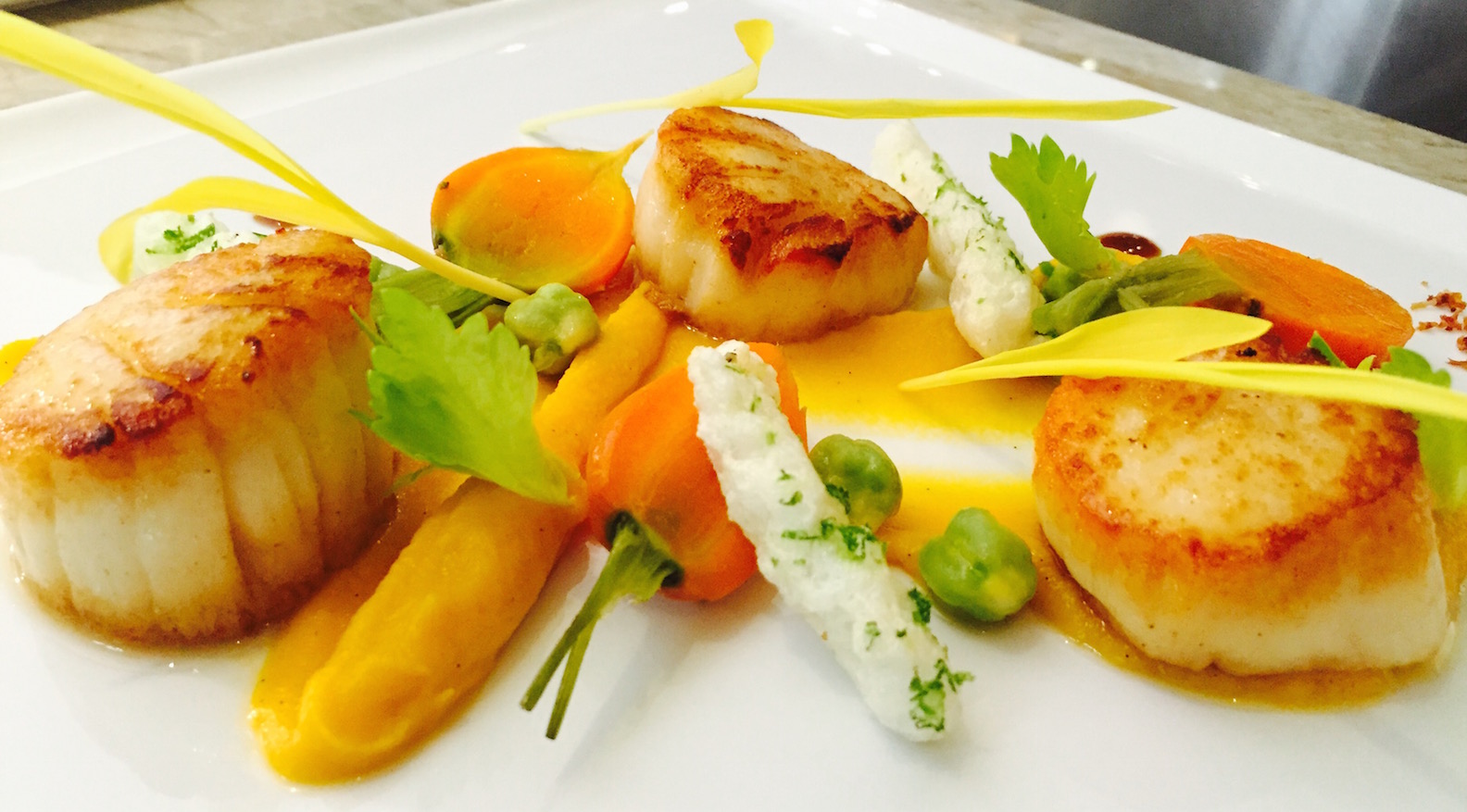 A
special appetizer of real note was a duet of
silky scallop and tuna crudo with
orange and yuzu
soy. Among the main courses I tried, there was a
fine, sweet and creamy corn risotto riddled with
chunks of Maine lobster and a benediction of
light parmesan foam ($32); Cardoso’s
wild branzino, pan-roasted and served with a
farro and quinoa salad, pimiento conserva and
delightful lemon chips ($34) was a canny
marriage of tastes and textures, while the
perfectly grilled, nicely chewy hanger steak
($38) came with charred shishito peppers, patatas
bravas and onions caramelized with
balsamic vinegar—a terrific dish. A
half of an excellent roast chicken ($26)
A
special appetizer of real note was a duet of
silky scallop and tuna crudo with
orange and yuzu
soy. Among the main courses I tried, there was a
fine, sweet and creamy corn risotto riddled with
chunks of Maine lobster and a benediction of
light parmesan foam ($32); Cardoso’s
wild branzino, pan-roasted and served with a
farro and quinoa salad, pimiento conserva and
delightful lemon chips ($34) was a canny
marriage of tastes and textures, while the
perfectly grilled, nicely chewy hanger steak
($38) came with charred shishito peppers, patatas
bravas and onions caramelized with
balsamic vinegar—a terrific dish. A
half of an excellent roast chicken ($26) 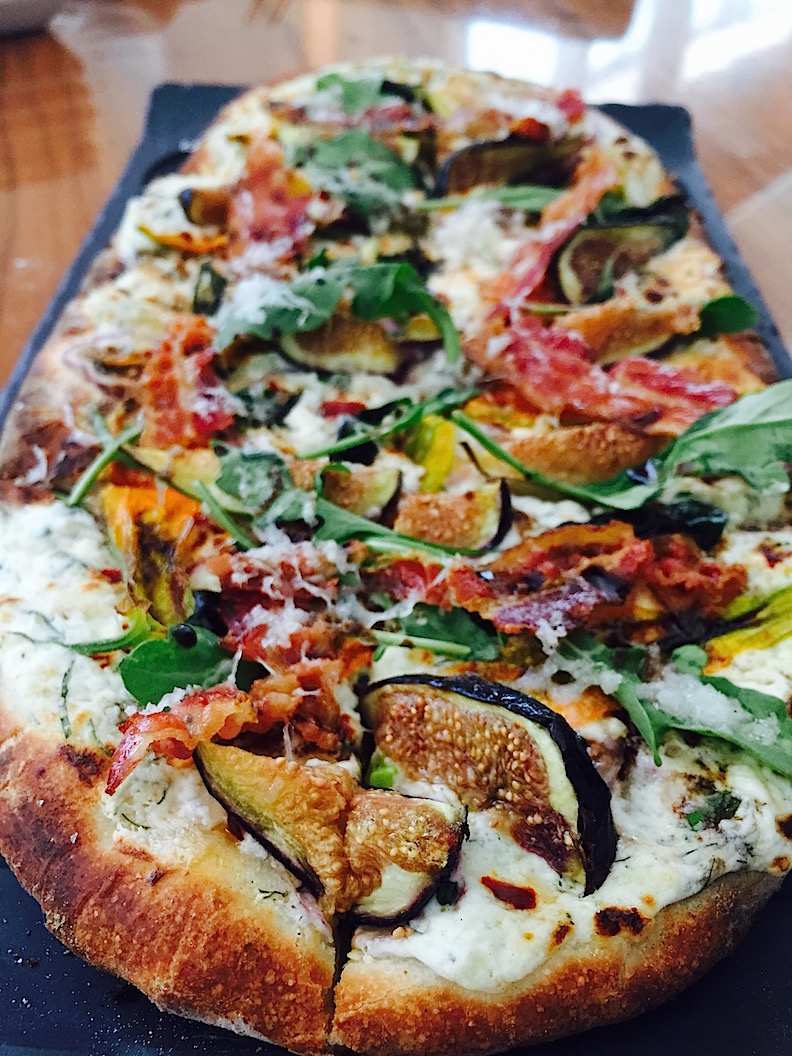 had a
hard-to-achieve crisp skin (which stayed that
way even the next day as my lunch) with black
kale, Moroccan couscous, tangy preserved lemon
and a shot of heat from harissa.
had a
hard-to-achieve crisp skin (which stayed that
way even the next day as my lunch) with black
kale, Moroccan couscous, tangy preserved lemon
and a shot of heat from harissa.
My favorite dessert
was the pistachio-infused crème brûlée, but the
ricotta cheesecake with tart lemon curd and
blueberry compote, and warm, crispy apple crostata
lavished with caramel sauce and slowly melting
vanilla ice cream were certainly of the same
quality.
This being a wine bar,
Atrio’s list is solid and, as you might expect,
many of the best prices are for Portuguese and
Spanish wines, some available by the cruet or
glass. Mark-ups
on much else on the list can go 250 to 300
percent above those at the wine store.
Atrio has managed to deflect
any thought of its being a mere appendage to the
hotel around it by appealing to the after-work
crowd from the area, its own guests, wine
aficionados, and, increasingly, those who know
that Cardoso is the best chef working way way
downtown.
By John Mariani
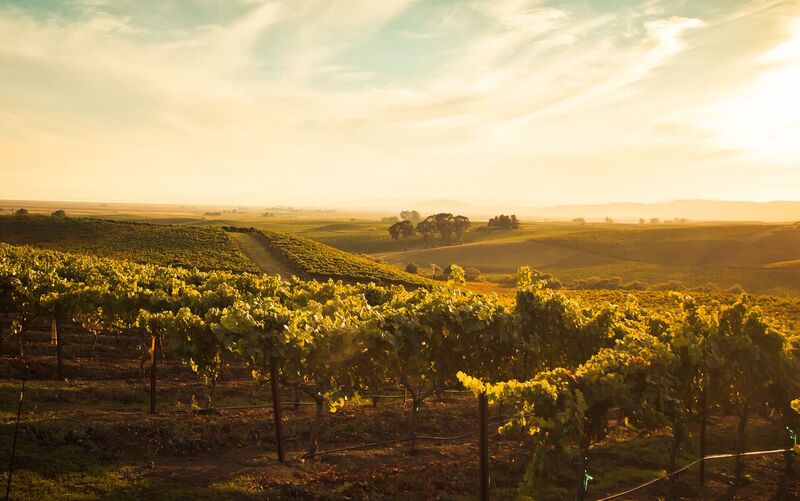
I’ve always believed that
Americans tend to like wines whose name they can
easily pronounce, like Bolla Soave and Cloudy
Bay, and shy away from those they cannot, like
Chassagne-Montrachet and Forstmeister
Geltz-Zilliken.
But that may only begin to describe the
allure of the wines of La Crema, whose
aficionados have a wide range of wines to choose
from under that mellifluous name, including
nearly 20 different Pinot Noirs and 10
Chardonnays, along with Pinot Gris and Viognier.
 It’s
become a matter of trust, of course. If a person
finds both the La Crema Pinot Noir and Chardonnay
to his liking, he is likely to find others in the
line intriguing, although prices range from $23 to
$90. At
dinner at Sea Grill restaurant in New York, I
asked La Crema’s winemaker, Elizabeth
Grant-Douglas (left),
why the winery makes so many iterations (that’s
the wine geek word for different bottlings of the
same varietal) of Pinot Noir and Chardonnay.
It’s
become a matter of trust, of course. If a person
finds both the La Crema Pinot Noir and Chardonnay
to his liking, he is likely to find others in the
line intriguing, although prices range from $23 to
$90. At
dinner at Sea Grill restaurant in New York, I
asked La Crema’s winemaker, Elizabeth
Grant-Douglas (left),
why the winery makes so many iterations (that’s
the wine geek word for different bottlings of the
same varietal) of Pinot Noir and Chardonnay.
“La Crema has built a broad
reputation for its most popular wines, so people
have come to trust the label,” she said, “and my
job is to maintain a La Crema style in all our
wines—not too buttery, not too much oak, letting
the fruit shine through—while discovering how our
different vineyards can produce nuances.”
Thus, a Green
Valley Pinot Noir 2013 ($65), which comes from the
coolest region of Sonoma, has “firm structure and
natural balance;” Shell Ridge Pinot Noir 2012
($50) is “brilliant, rugged, rich,” deriving
flavor from the “ancient sea shells in the soils
of Shell Ridge;” Chardonnay Nine Barrel 2012 ($70)
is “an exceptional expression of a Russian River
Valley Chardonnay, made from nine of the highest
quality barrels.”
La Crema also has holdings in other parts
of California as well as in Oregon’s Willamette
Valley.
Grant-Douglas,
who grew up in Niagara Falls, Canada, and
graduated from Brock University’s Cool Climate
Oenology and Viticulture program, is expert in
dealing with the vagaries of cold terroirs, even
making so-called ice wine, whose grapes literally
freeze on the vine.
She joined La Crema as an enologist in
2001,  was named
Winemaker in 2010, and since 2013 has been
Director of Wine making for the company. “They
wanted someone who understood cold climates,” she
said, “and when I got to La Crema I worked the
nigh shift during the harvest as the lowest man on
the totem pole.
They didn’t hire me for my name; I think it
was more for my strong back and boundless
enthusiasm.”
was named
Winemaker in 2010, and since 2013 has been
Director of Wine making for the company. “They
wanted someone who understood cold climates,” she
said, “and when I got to La Crema I worked the
nigh shift during the harvest as the lowest man on
the totem pole.
They didn’t hire me for my name; I think it
was more for my strong back and boundless
enthusiasm.”
Nor was she hired to make wines
that were expressions of her own style. “They
didn’t hire me to make an `Elizabeth wine’ and I
wouldn’t want to,” she said. “Matter of fact, I
believe that, if a winemaker makes a Pinot Noir or
Chardonnay that shows his hand in it, that’s not a
good thing.
Sometimes you have to wonder how much Pinot
Noir is actually in some of those bottles, because
they don’t taste much like Pinot Noir. They
taste more like Zinfandel or Syrah.”
One of the ways Grant-Douglas
“finalizes” a wine is to take a sample bottle home
with her to have with dinner, insisting, “If the
wine doesn’t go well with food, it’s not a good
wine.”
The
winery, which has moved around a bit over four
decades, is this summer opening The La Crema
Russian River Estate, spread over 260 acres of
Saralee’s Vineyard. Founded in 1979, later
purchased by the Jess Jackson family. Despite
the amount of wine La Crema produces, most are
made in small-batch appellations of between 2,000
and 6,000 cases.
The treatment of the newly
harvested grapes is crucial to achieving a certain
delicacy and the creamy texture of La Crema’s
wines. In
the case of Saralee’s Vineyard Chardonnay 2013,
the grapes “are hand harvested and 100% whole
cluster pressed. After one night of cold settling,
they are racked in French Open barrels for
fermentation, then inoculated with the house
strain of malolactic culture and stirred once
every three weeks to enhance richness of mouth
feel. The juices are racked only once before
bottling.”
With the Saralee’s Vineyard
Pinot Noir 2013, “seventy percent whole berries go
into open top tank of fermentation, with juice
cold-soaked for 3 to 5 days and carefully hand
punched three times each day” to achieve the best
extraction.
The free run wine is then transferred to
100% French oak barrels, where it is aged for 10
months.
The
whole aim, as Grant-Douglas says, is to produce a
range of wines that are not only exemplary of the
varietals in the bottle but that also are
definitively La Crema, vintage after vintage,
vineyard after vineyard. The less done back at the
winery the more likely that is to be achieved.
❖❖❖
CAUGHT A GLIMPSE OF
THE LAKE ON OUR WAY
TO THE MASSAGE SPA
"Just Back From…Lake
Como, Italy
Trip Duration:
4 Days, 4 Nights
Flight
Plan: I flew direct from New
York to Milan and then we took a car service to Lake
Como, which is about a two hour drive. For the
plane, my Marc
Jacobs knit pants and White and
Warren cashmere travel wrap
are essential, along with Avene
Thermal Water, Pixi Rose
face wipes to feel refreshed and Chanel
face moisturizer and saline spray
for my nose to keep me from getting sick. I flew Economy
this trip, but lucked out with a three seater to
myself and an iPad with Closer and The Way
We Were downloaded."-- Kerry Pieri, Harper's Bazaar
(May 2016)
 PEEL OUT!
PEEL OUT!
An 18-wheeler
on North Carolina's I-77 collided with a center divider
causing a spill of 50,000
pounds of runaway taters, tying up traffic for hours
until clean-up crews carted them away.
Any of John Mariani's books below may be ordered from amazon.com.
 The
Hound in Heaven (21st Century Lion Books)
is a novella, and for anyone who loves dogs,
Christmas, romance, inspiration, even the supernatural, I
hope you'll find this to be a treasured favorite.
The story concerns how, after a New England teacher,
his wife and their two daughters adopt a stray puppy found
in their barn in northern Maine, their lives seem full of
promise. But when tragedy strikes, their wonderful dog
Lazarus and the spirit of Christmas are the only things
that may bring his master back from the edge of
despair.
The
Hound in Heaven (21st Century Lion Books)
is a novella, and for anyone who loves dogs,
Christmas, romance, inspiration, even the supernatural, I
hope you'll find this to be a treasured favorite.
The story concerns how, after a New England teacher,
his wife and their two daughters adopt a stray puppy found
in their barn in northern Maine, their lives seem full of
promise. But when tragedy strikes, their wonderful dog
Lazarus and the spirit of Christmas are the only things
that may bring his master back from the edge of
despair. WATCH THE VIDEO!
“What a huge surprise turn this story took! I was completely stunned! I truly enjoyed this book and its message.” – Actress Ali MacGraw
“He had me at Page One. The amount of heart, human insight, soul searching, and deft literary strength that John Mariani pours into this airtight novella is vertigo-inducing. Perhaps ‘wow’ would be the best comment.” – James Dalessandro, author of Bohemian Heart and 1906.
“John Mariani’s Hound in Heaven starts with a well-painted portrayal of an American family, along with the requisite dog. A surprise event flips the action of the novel and captures us for a voyage leading to a hopeful and heart-warming message. A page turning, one sitting read, it’s the perfect antidote for the winter and promotion of holiday celebration.” – Ann Pearlman, author of The Christmas Cookie Club and A Gift for my Sister.
“John Mariani’s concise, achingly beautiful novella pulls a literary rabbit out of a hat – a mash-up of the cosmic and the intimate, the tragic and the heart-warming – a Christmas tale for all ages, and all faiths. Read it to your children, read it to yourself… but read it. Early and often. Highly recommended.” – Jay Bonansinga, New York Times bestselling author of Pinkerton’s War, The Sinking of The Eastland, and The Walking Dead: The Road To Woodbury.
“Amazing things happen when you open your heart to an animal. The Hound in Heaven delivers a powerful story of healing that is forged in the spiritual relationship between a man and his best friend. The book brings a message of hope that can enrich our images of family, love, and loss.” – Dr. Barbara Royal, author of The Royal Treatment.
 |
The Encyclopedia of American Food and Drink by John F. Mariani (Bloomsbury USA, $35) Modesty forbids me to praise my own new book, but let me proudly say that it is an extensive revision of the 4th edition that appeared more than a decade ago, before locavores, molecular cuisine, modernist cuisine, the Food Network and so much more, now included. Word origins have been completely updated, as have per capita consumption and production stats. Most important, for the first time since publication in the 1980s, the book includes more than 100 biographies of Americans who have changed the way we cook, eat and drink -- from Fannie Farmer and Julia Child to Robert Mondavi and Thomas Keller. "This book is amazing! It has entries for everything from `abalone' to `zwieback,' plus more than 500 recipes for classic American dishes and drinks."--Devra First, The Boston Globe. "Much needed in any kitchen library."--Bon Appetit. |
"Eating Italian will never be the same after reading John Mariani's entertaining and savory gastronomical history of the cuisine of Italy and how it won over appetites worldwide. . . . This book is such a tasteful narrative that it will literally make you hungry for Italian food and arouse your appetite for gastronomical history."--Don Oldenburg, USA Today. "Italian
restaurants--some good, some glitzy--far
outnumber their French rivals. Many of
these establishments are zestfully described
in How Italian Food Conquered the World, an
entertaining and fact-filled chronicle by
food-and-wine correspondent John F.
Mariani."--Aram Bakshian Jr., Wall Street
Journal.
"Equal parts
history, sociology, gastronomy, and just
plain fun, How Italian Food Conquered the
World tells the captivating and delicious
story of the (let's face it) everybody's
favorite cuisine with clarity, verve and
more than one surprise."--Colman Andrews,
editorial director of The Daily
Meal.com. "A fantastic and fascinating
read, covering everything from the influence
of Venice's spice trade to the impact of
Italian immigrants in America and the
evolution of alta cucina. This book will
serve as a terrific resource to anyone
interested in the real story of Italian
food."--Mary Ann Esposito, host of PBS-TV's
Ciao
Italia. "John Mariani has written the
definitive history of how Italians won their
way into our hearts, minds, and
stomachs. It's a story of pleasure over
pomp and taste over technique."--Danny Meyer,
owner of NYC restaurants Union Square
Cafe, The Modern, and Maialino.
|
 |
 |
 |
 |
 |
 |
 |
 |
 Everett Potter's Travel Report:
Everett Potter's Travel Report: 
 Eating Las
Vegas JOHN CURTAS has been covering
the Las Vegas food and restaurant scene
since 1995. He is the co-author of EATING LAS
VEGAS – The 50 Essential Restaurants (the
fourth edition of which will be published in
early 2016), as well as the author of the Eating Las
Vegas web site: www.eatinglasvegas.
He can also be seen every Friday morning as
the “resident foodie” for Wake Up With the
Wagners on KSNV TV (NBC) Channel 3 in
Las Vegas.
Eating Las
Vegas JOHN CURTAS has been covering
the Las Vegas food and restaurant scene
since 1995. He is the co-author of EATING LAS
VEGAS – The 50 Essential Restaurants (the
fourth edition of which will be published in
early 2016), as well as the author of the Eating Las
Vegas web site: www.eatinglasvegas.
He can also be seen every Friday morning as
the “resident foodie” for Wake Up With the
Wagners on KSNV TV (NBC) Channel 3 in
Las Vegas.

MARIANI'S VIRTUAL GOURMET
NEWSLETTER is published weekly. Editor/Publisher: John
Mariani.
Editor: Walter Bagley. Contributing Writers: Christopher Mariani,
Robert Mariani, Misha
Mariani,
John A. Curtas, Edward Brivio, Mort Hochstein,
Andrew Chalk, Dotty Griffith and Brian Freedman. Contributing
Photographers: Galina Dargery, Bobby
Pirillo. Technical Advisor: Gerry McLoughlin.
To un-subscribe from this newsletter,click here.
© copyright John Mariani 2016

